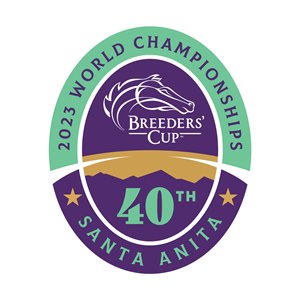Medical Checks for Breeders' Cup Starters Underway


The important and challenging task of assessing the health of more than 200 possible candidates for the 14 Breeders' Cup races has already begun.
Breeders' Cup Limited announced Oct. 24 that it has introduced a new protocol in which its veterinary review team has already conducted an initial round of medical checks for potential starters.
Since early this month, Breeders' Cup candidates have been the subject of a process that includes checking a horse's medical records and its training and racing patterns, and in some cases physical examinations conducted by state veterinarians. When needed, diagnostic tools, such as PET scans and other modalities, have been used to determine a horse's fitness to run at the Nov. 3-4 40th edition of the World Championships at Santa Anita Park.
"This enhancement to the best-in-class safety protocols already required by the Breeders' Cup provides an extra layer of veterinary oversight as we strive to ensure we are administering the safest two days of racing possible," said Dora Delgado, Breeders' Cup executive vice president and chief racing officer. "We would like to thank our veterinary team, the veterinarians at 1/ST Racing, the (California Horse Racing Board), (Horseracing Integrity and Safety Agency), and all the regulatory vets who were involved and our counterparts at tracks around the world for helping us execute this massive undertaking."
The review was led by Dr. Will Farmer and Dr. Debbie Lamparter of the Breeders' Cup Veterinary Team, Dr. Jeff Blea and Dr. Timothy Grande of the CHRB, and Dr. Dionne Benson of 1/ST Racing, while working in coordination with HISA's director of equine safety and welfare, Dr. Jennifer Durenberger.
Aron Wellman, president and founder of Eclipse Thoroughbred Partners, expressed support for the new procedures.
"We are 100% percent behind more safety initiatives," he said. "Any protocols that can minimize the risk of injury to the horses and the riders and promote safety, we are supportive of."
Wellman, whose partnership owns grade 1 winners and leading Breeders' Cup candidates Locked (Breeders' Cup Juvenile, G1) and Candied (Breeders' Cup Juvenile Fillies, G1) said creating a baseline for a horse's health and idiosyncrasies will help on-site veterinarians at Santa Anita make better assessments of the runner's physical condition.
"This allows the Breeders' Cup to build a baseline because not all horses are perfect in the manner in which they jog up, in the manner in which they flex. The more familiar the vets are with these horses' tendencies I think is a positive. When they only look at them that week, they can jump to conclusions as to whether a horse is sound at an initial glance. But the key in my experience is consistency. If they detect tendencies that a horse has, I think it will allow for a more fair and reasonable analysis of that horse's condition.
"So, if it means it creates some inconvenience for trainers and their staff in that they have to make their horses available for a longer period of time than normal, we should not object to that or serve as a barrier to that access. At the end of the day, the elongated process is in everyone's best interests."
With pre-entries for the 14 races now closed and an announcement of the prospective fields set for Oct. 25, beginning on Oct. 27 exams will take place at Santa Anita, with all entrants facing random physical exams at the discretion of the Breeders' Cup's veterinary team.
The earlier round of medical checks joins an existing battery of exams and monitoring geared to detect any unsoundness or medical issues that would prevent a horse from competing in the World Championships.
With foreign horses required to be on the grounds by Oct. 29 at 10 p.m. PST and United States-based horses by Oct. 31 at 11 a.m. PST, those protocols include a mandatory under rider jog-up exam before daily training beginning Oct. 27. Veterinarians will also monitor entrants on the racetrack and the barn area and conduct random physical exams.
Aside from out-of-competition testing that has been taking place for the last five months, pre-race testing for banned substances will be conducted Oct. 31 by the Horseracing Integrity and Welfare Unit.
The care and testing of the racing surface will be handled by Dr. Mick Peterson, director of the University of Kentucky's Racetrack Safety Program, and the Santa Anita track maintenance crew.
